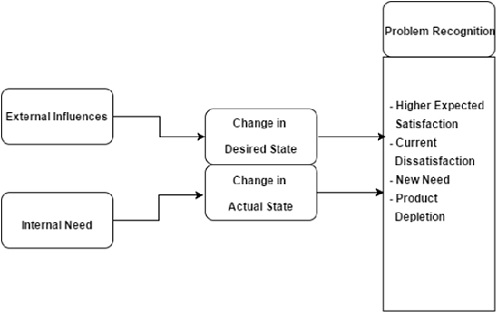
- Consumer Behavior Tutorial
- Consumer Behavior - Home
- Consumer Behavior - Consumerism
- Consumer Behavior - Significance
- Demand Analysis
- Buying Decision Process
- Developing Marketing Concepts
- Marketing Strategies
- Market Segmentation
- Market Positioning
- Role of Research
- Problem Recognition
- Research Paradigm
- Research Process
- Decision Making
- Pre-Purchase & Post-Purchase
- Individual Determinants
- Consumer Behavior - Motivation
- Personality & Self Concept
- Attention & Perception
- Consumer Behavior - Learning
- Consumer Behavior - Attitude
- External Influence
- Influence of Culture & Social Class
- Relationship Marketing
- Reference Group
- Models of Consumer Behavior
- Consumer Behavior - Models Types
- Implications of Marketing Models
- Online Customer Behavior
- Consumer Behavior - Expectations
- Emerging Trends
- Emerging Issues
- Consumer Behavior - Cross Culture
- Consumer Behavior Resources
- Consumer Behavior - Quick Guide
- Consumer Behavior - Resources
- Consumer Behavior - Discussion
Consumer Behavior - Problem Recognition
Business managers need to be skilled, have expertise in problem recognition and solution techniques to be the greatest help in guiding their company towards greater success.

In problem recognition, the consumer recognizes a problem or need or want. The buyer recognizes a difference between his or her actual state and some desired state.
The need can be generated by internal stimuli when one of the person’s normal needs − hunger, thirst, sex, etc. rises to a high level sufficient to become a drive. A need can also be generated by external stimuli.
At this stage, the marketer should evaluate the consumer’s perspective by considering the basic questions like −
- What kinds of needs or problems or efforts arise.
- What brought them about and
- How it led the consumer towards the particular product.
Maslow’s Hierarchy of Needs
American Psychologist Abraham Harold Maslow believes that, needs are arranged in a hierarchy form. Only after a human has achieved the needs at a certain stage, does he move to the next one.
According to Maslow's theory, when a human being goes up the levels of the hierarchy has fulfilled the needs and wants in the hierarchy, one may ultimately achieve self-actualization. Maslow in the end concluded that, self-actualization was not a regular outcome of satisfying the other human needs. Human needs as identified by Maslow are as follow −
At the bottom of the hierarchy level are the "Basic needs or Physiological needs" of a human being − food, water, shelter, sleep, sex etc.
The next level is "Safety Needs − Security, Order, safety and Stability". These two steps are important for the physical survival of the person.
The third level of need is "Love and Belonging", which are psychological needs; when individuals have taken care of themselves physically, they are ready to share themselves with others, such as with family, friends and relatives.
The fourth level is achieved when individuals feel comfortable with what they have achieved. This is the "Esteem" level, the need to be capable and recognized, such as position, status and level of success.
The fifth level is the "Cognitive" or the "self-actualization" level, where individuals intellectually stimulate themselves and explore for their growth.
Finally, there is the "Aesthetic" level, which is the need for harmony, unity, order and beauty.